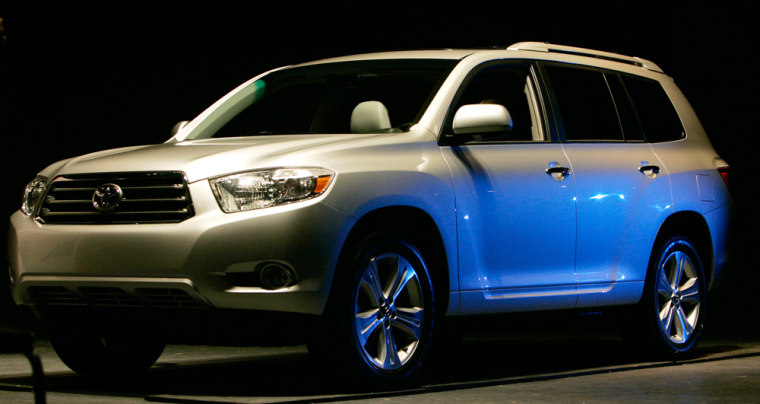Soaring gasoline prices may not be causing a mass stampede away from gas-guzzling pickup trucks and sport utility vehicles, but they do appear to be sending consumers toward smaller versions of those vehicles, according to new research.
Refinery outages and tight supplies have sent pump prices soaring in recent weeks, with the national average price of regular gasoline rising this week to a record of nearly $3.20 a gallon, according to AAA.
At the same time, owner loyalty in the large pickup and midsize and large SUV segments has dropped, according to the Power Information Network, a division of industry tracking firm J.D. Power and Associates, which tracked the percent of owners who traded in their vehicles for another in the same segment during February and March.
“What we are seeing is a gradual shift toward smaller vehicles,” said Tom Libby, senior director of industry analysis at the Power Information Network.
“It’s not a traumatic, sudden lurch, but a steady movement that has been going on for some time,” he said. “During periods of high gas prices over the past two years, we’ve seen movement from larger to smaller SUVs.”
Vehicles losing customer loyalty include large SUVs and pickups like the Ford Expedition, the Chevrolet Tahoe and Ford’s F-Series trucks, as well as midsize SUVs like the Jeep Grand Cherokee and Ford Explorer, according to Libby. But “the total SUV pie remains largely intact,” he said, given that the new “crossover” vehicle segment — scaled-down versions of SUVs built on car platforms — are included in the overall SUV segment.
“Vehicles most at risk are in the midsize segment. Consumers have a direct alternative in the crossover because it gets better gas mileage and offers a better ride, and sales in that (midsize) segment have already dropped,” Libby said. “Minivans are also at risk."
General Motors and Ford have stopped making minivans, and crossovers offer buyers the same benefits as many of the minivans now on sale, Libby notes.
Crossovers gaining in popularity include the Ford Edge, Toyota Highlander and Nissan Murano, Libby said. Smaller-sized SUVs, including Toyota’s Rav 4, the Honda CRV and Ford Escape also are doing well, he added.
Smaller vehicles, including both cars and light trucks, have risen from 26.3 percent of total sales in the first quarter of 2004 to 31.8 percent in 2007, Libby said.
“It seems that manufacturers should be making sure they have as much representation as possible in the smaller vehicle segment because that’s where the market is going now,” said Libby.
The shift is yet another wake-up call for GM, Ford and Chrysler, which still offer a mix of products that are skewed toward more profitable, larger vehicles. Ford’s F-Series trucks, for example, have long been the country’s best-selling vehicle and a main source of income for the struggling automaker.
“All automakers make large pickups and SUVs, but the difference is the three domestic automakers have offered product lineups that are skewed toward larger vehicles, so this shift is going to be more difficult for them,” said Libby.
Nevetheless he said he sees pickup sales remaining relatively strong, expecially compared to the more at-risk large SUV segment.
“When it comes to contractors building houses, there’s no viable alternative to the pickup truck — there’s nothing else they can use,” Libby said. “So even though there is a softening, it’s relatively stable because there’s no substitute. But in the large SUV segment there is a substitute in the crossover, so we think SUVs are more at risk.”
Big U.S. automakers are already expecting a challenging summer for sales. Faced with rising gas prices and weakening real estate prices, which have reduced the amount of cash that consumers have on hand for purchases, they are expected to ramp up their sales incentives this summer to lure on-the-fence shoppers back into their showrooms.
GM has rolled out a new round of sales incentives, offering zero-percent financing deals on 36-month loans for certain versions of its Chevrolet Silverado and GMC Sierra.
